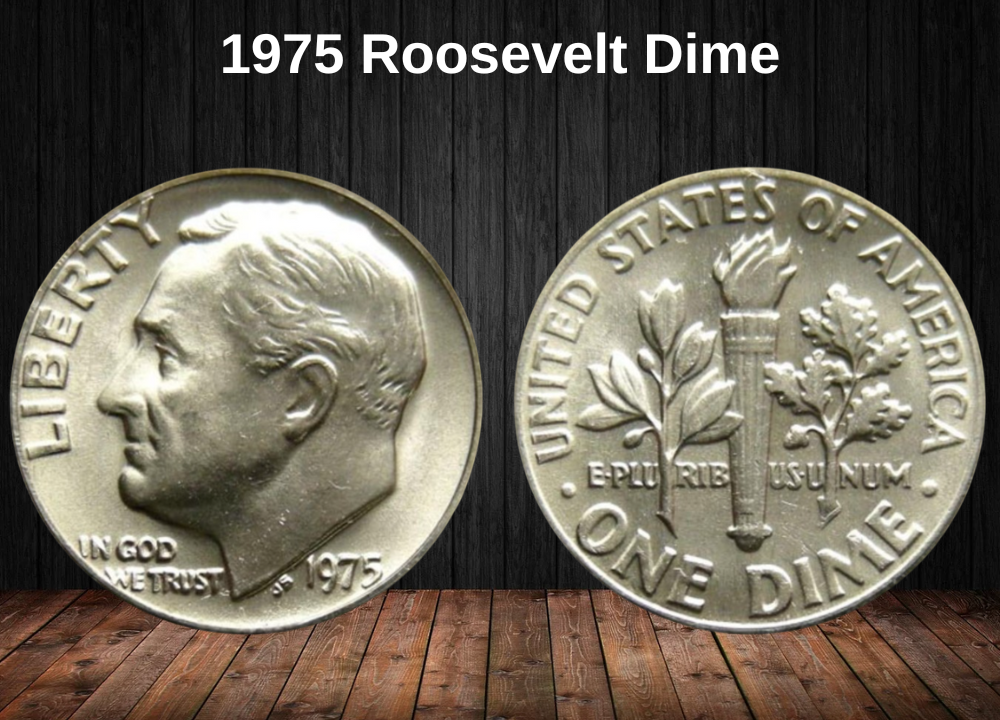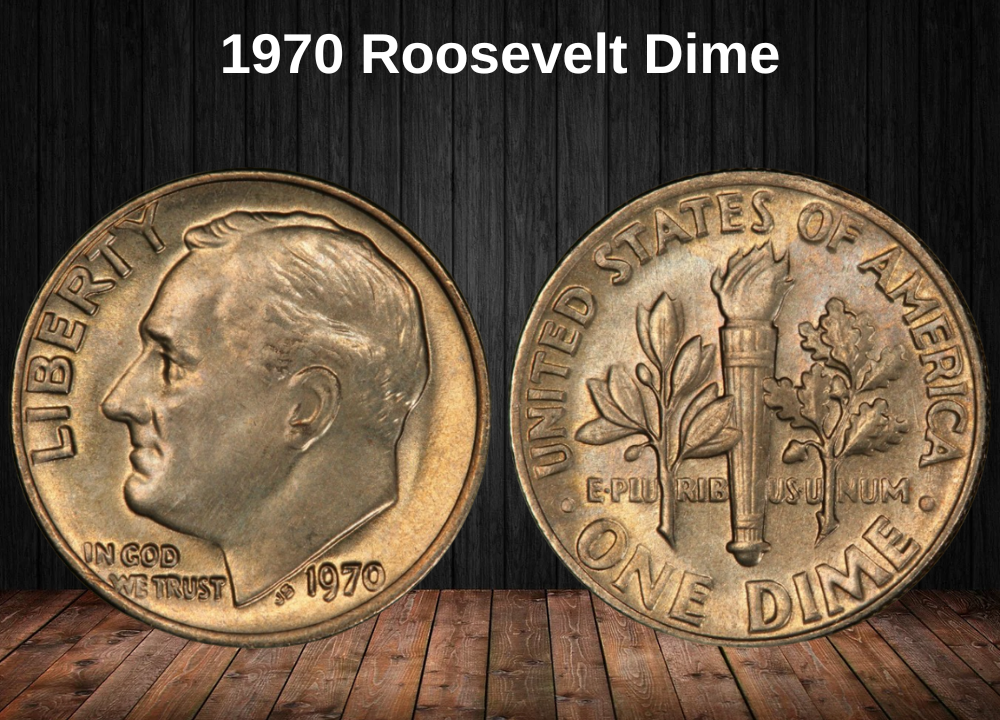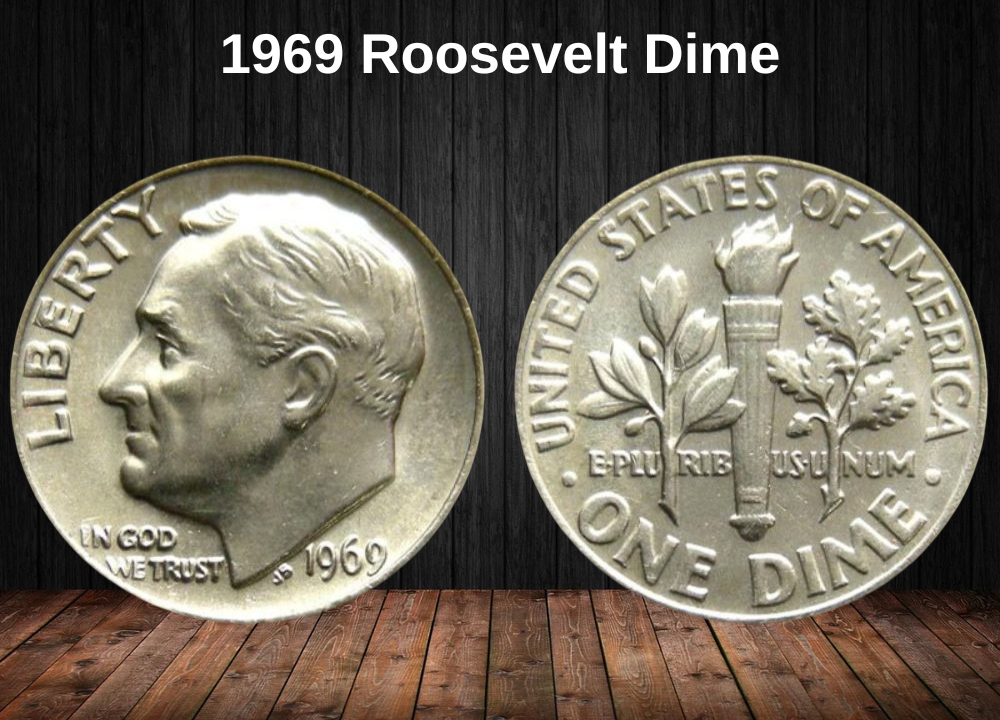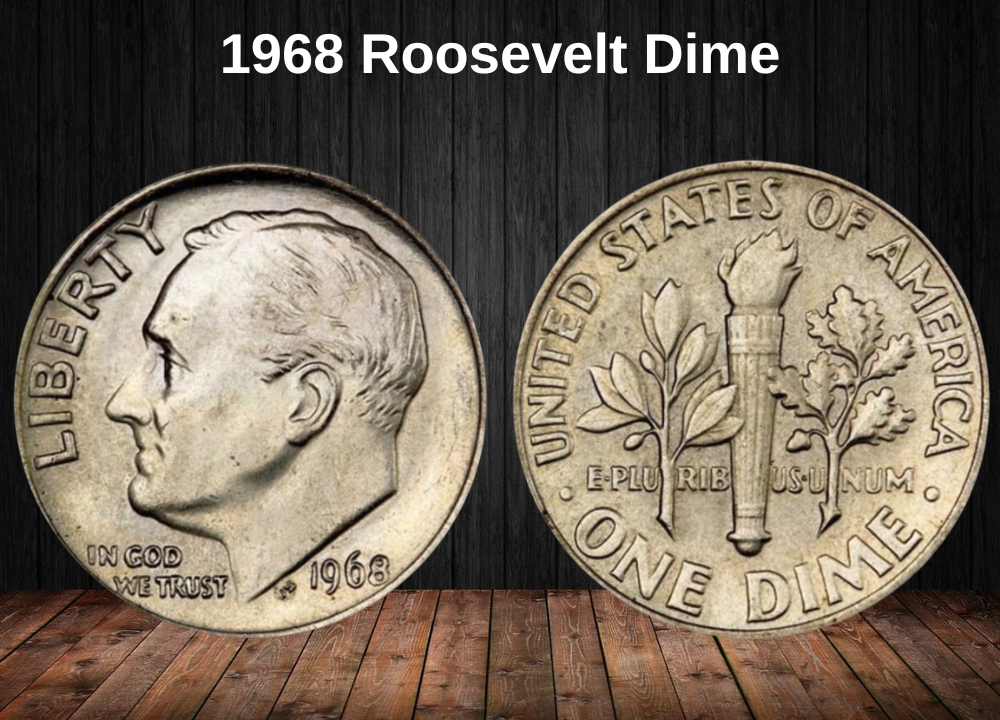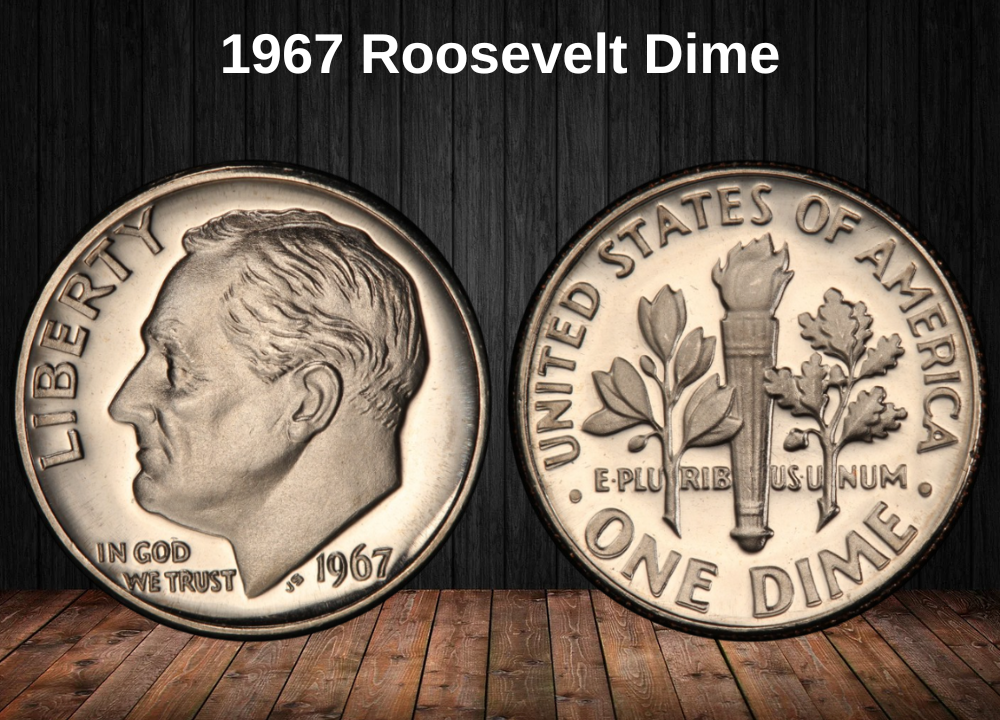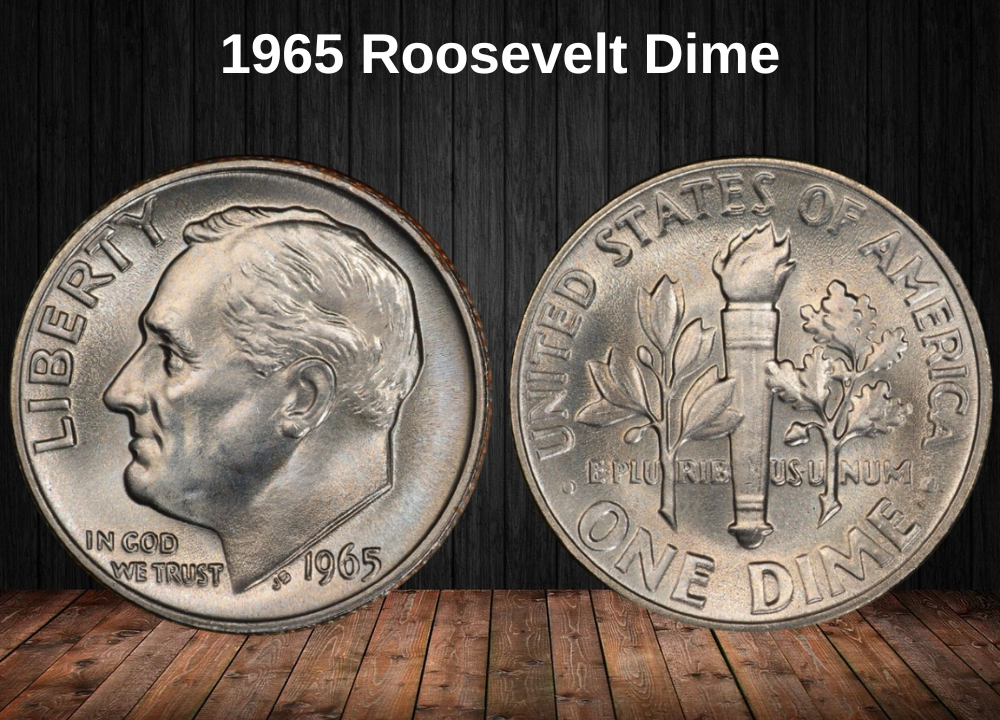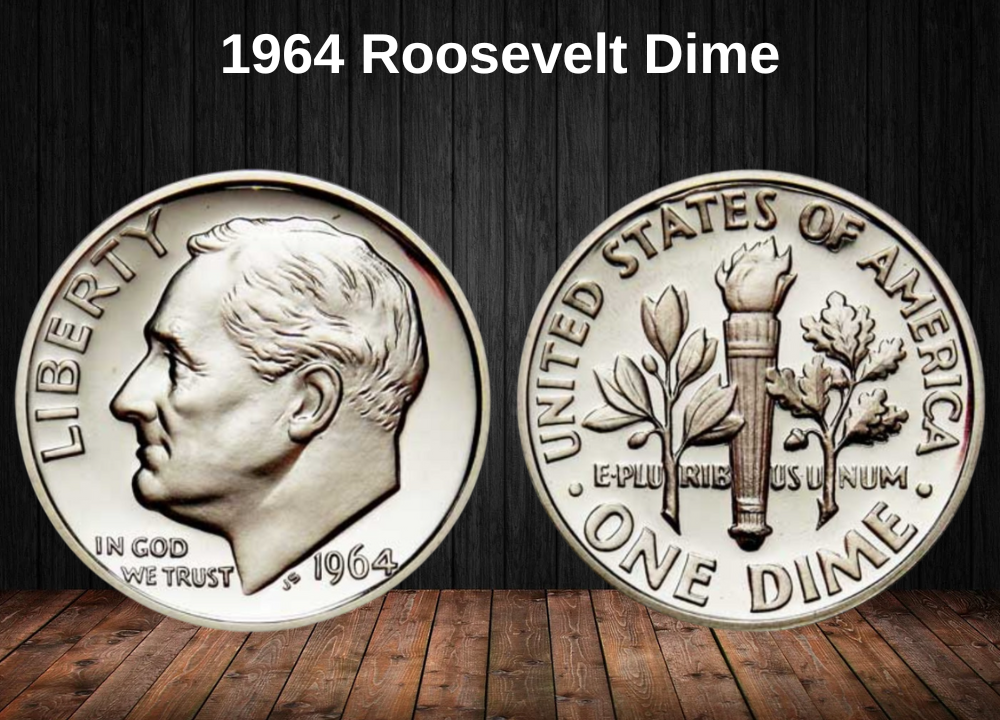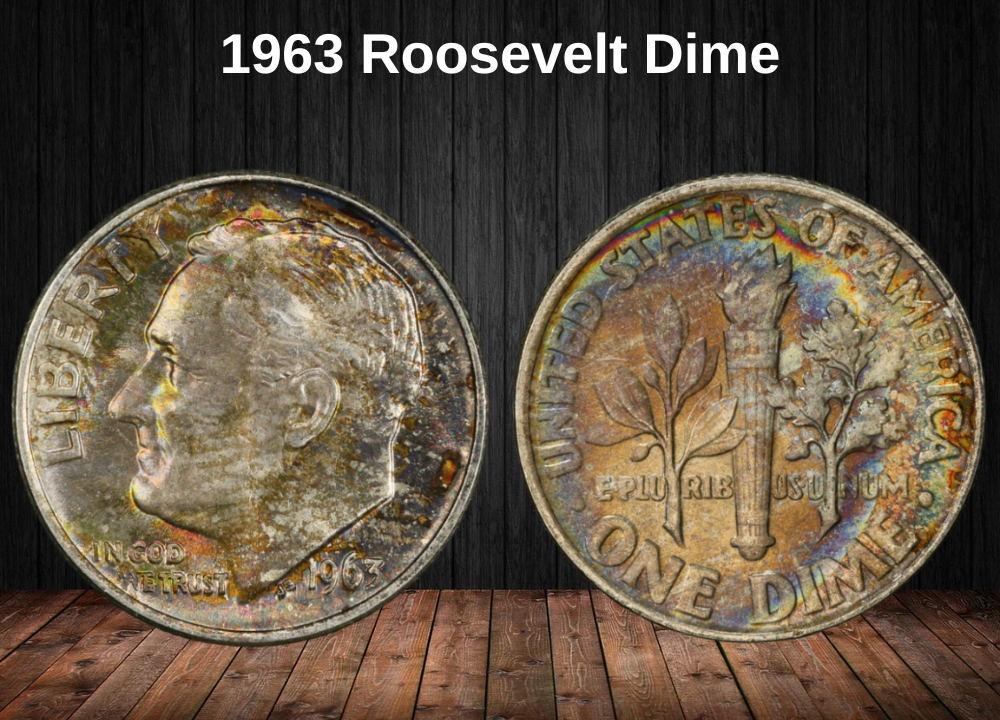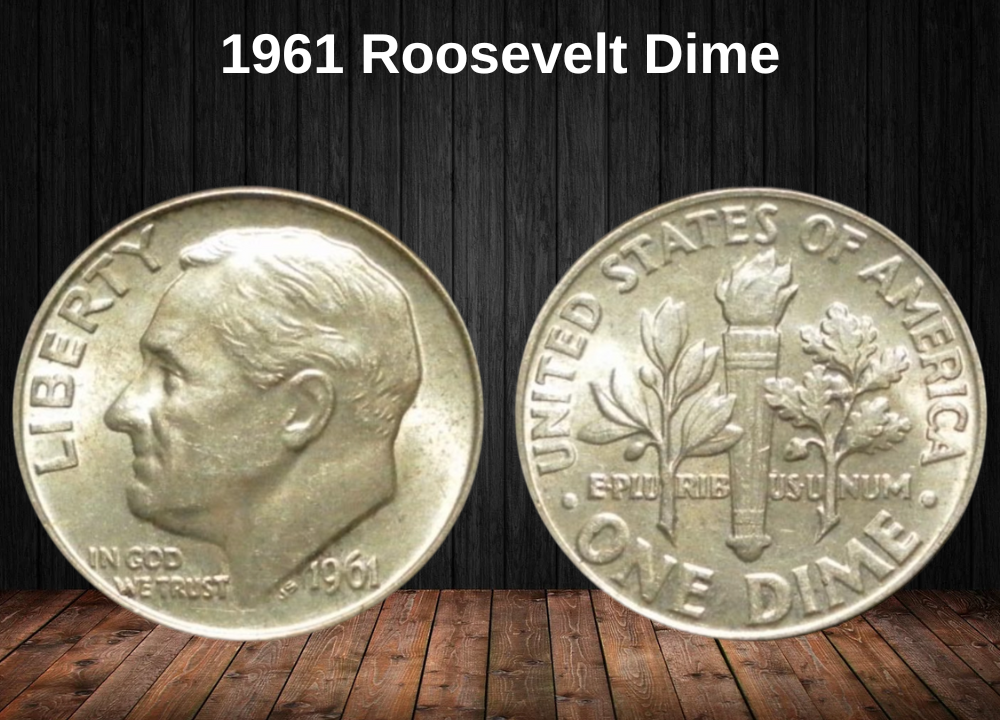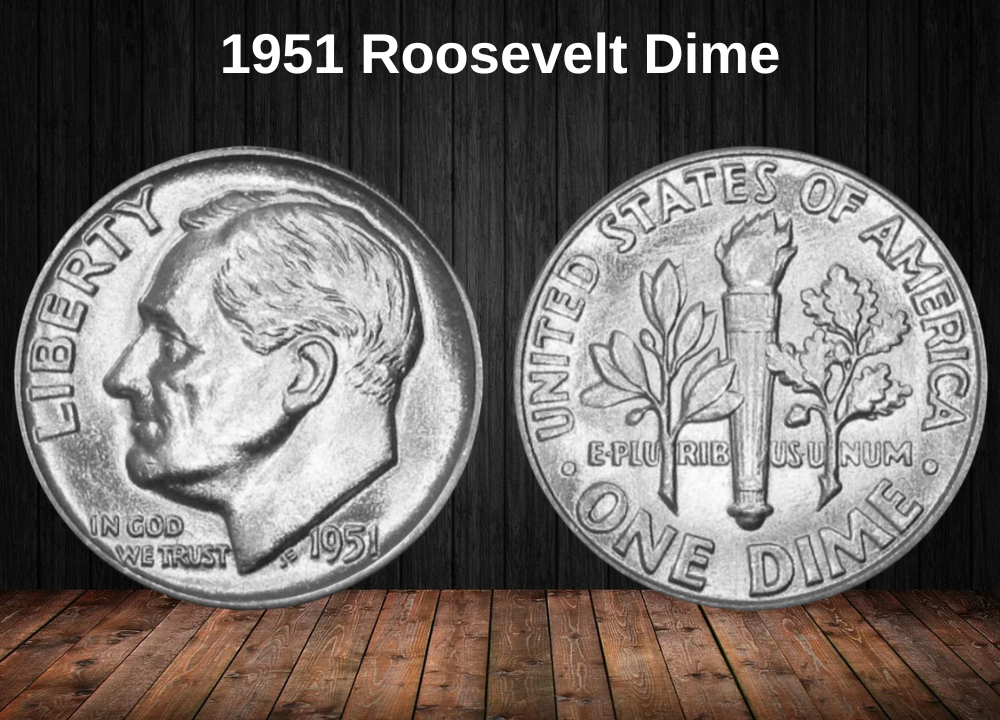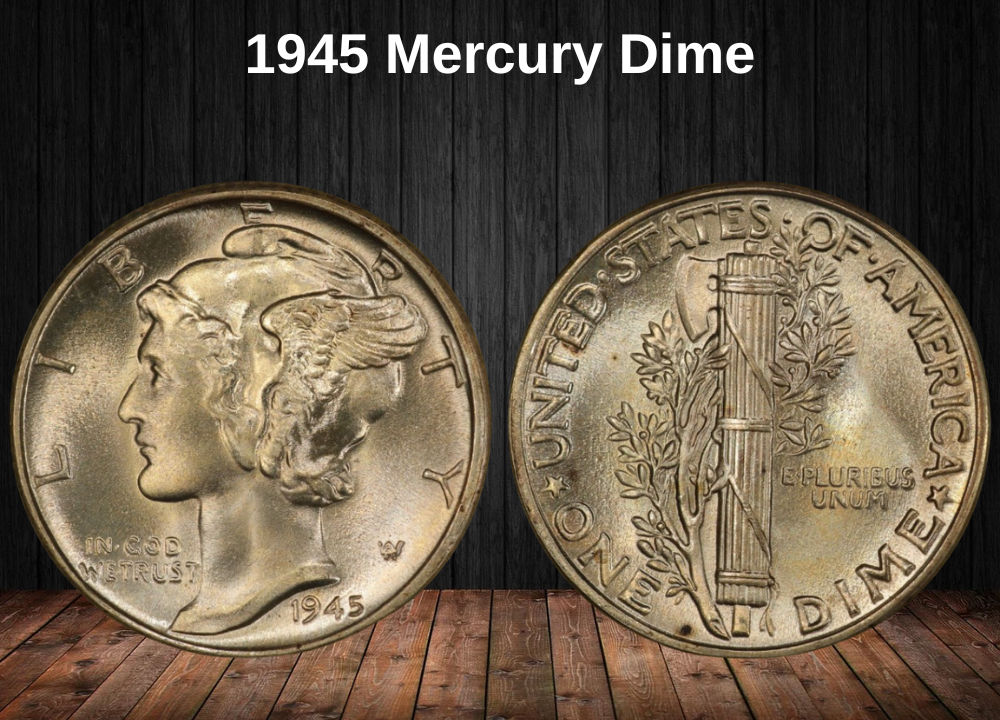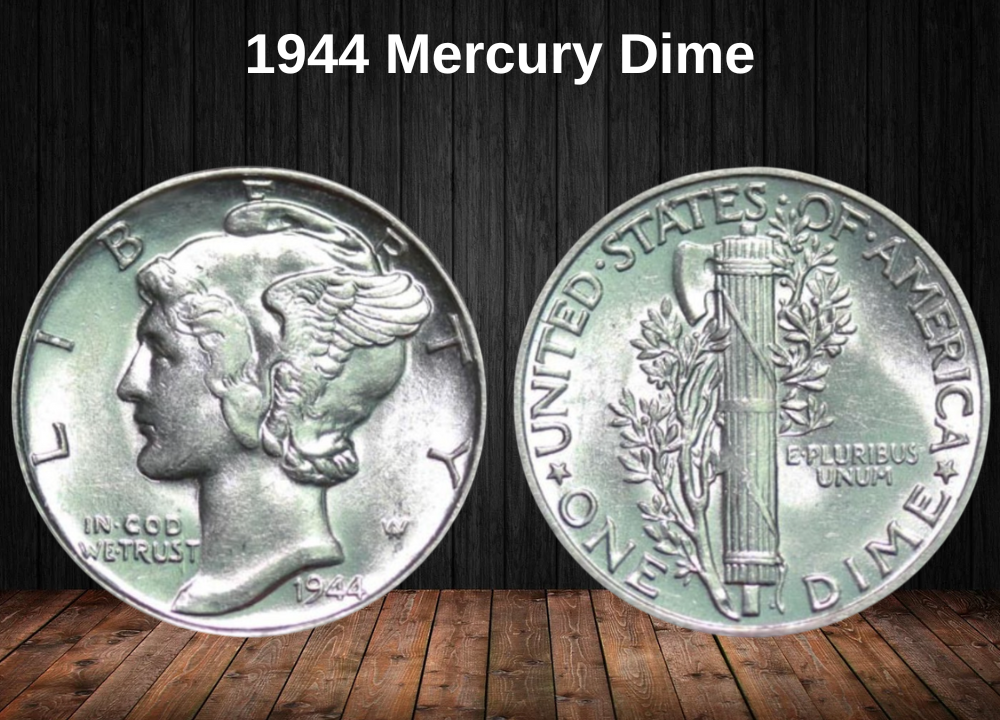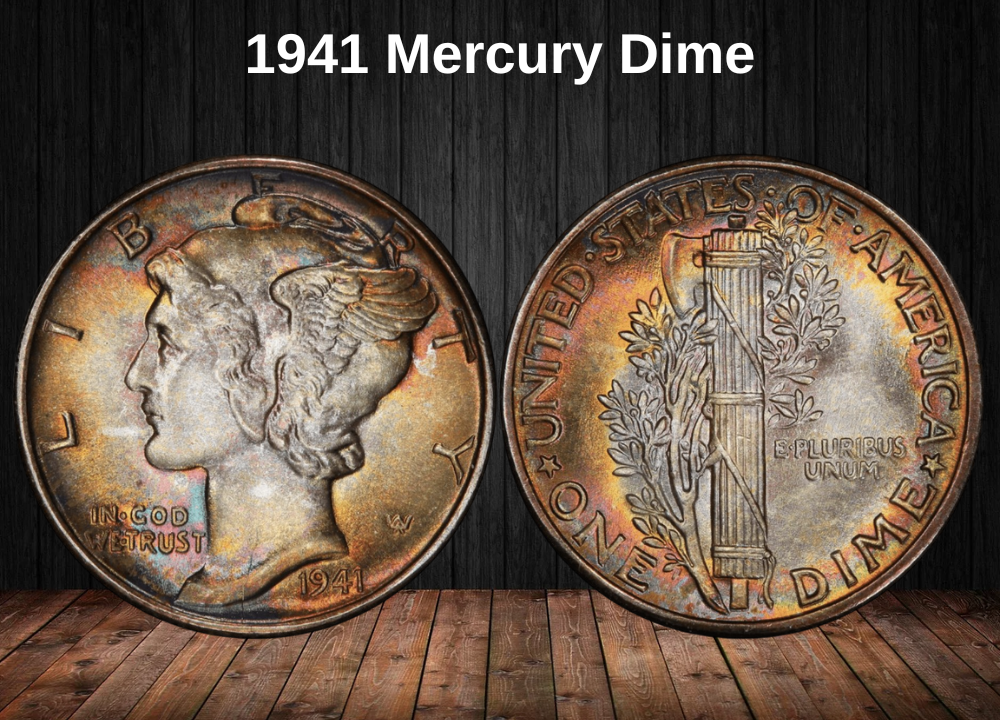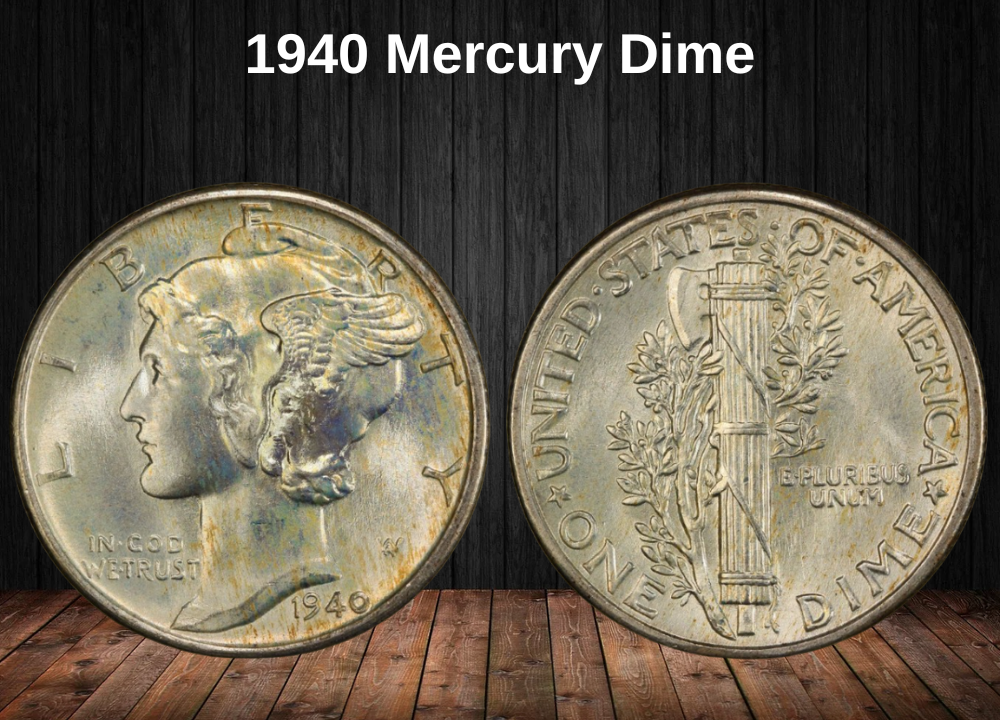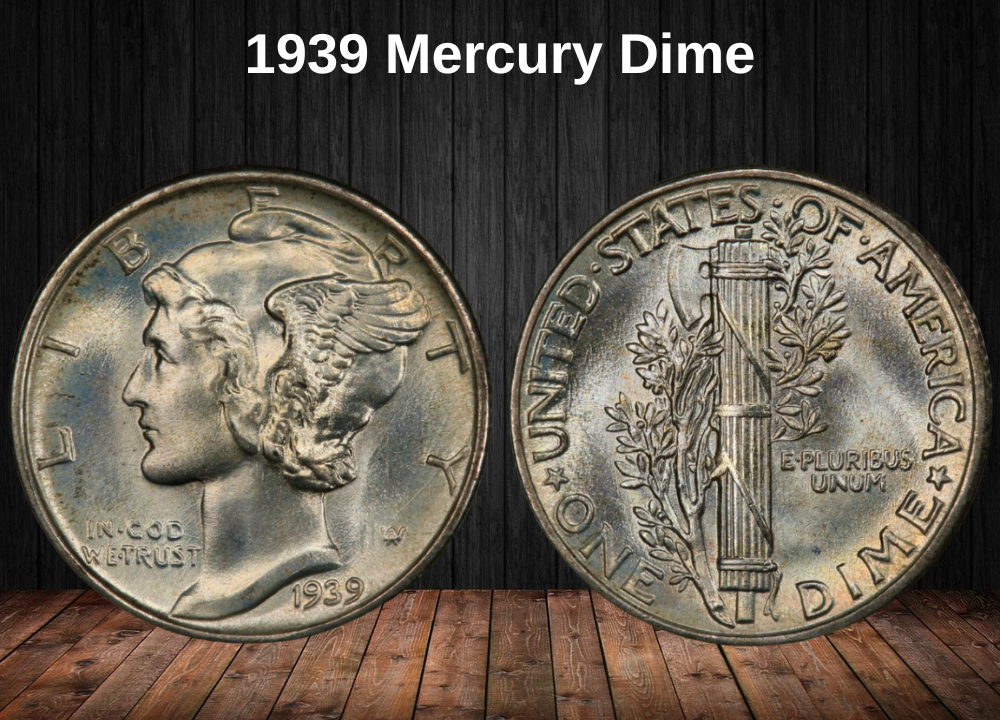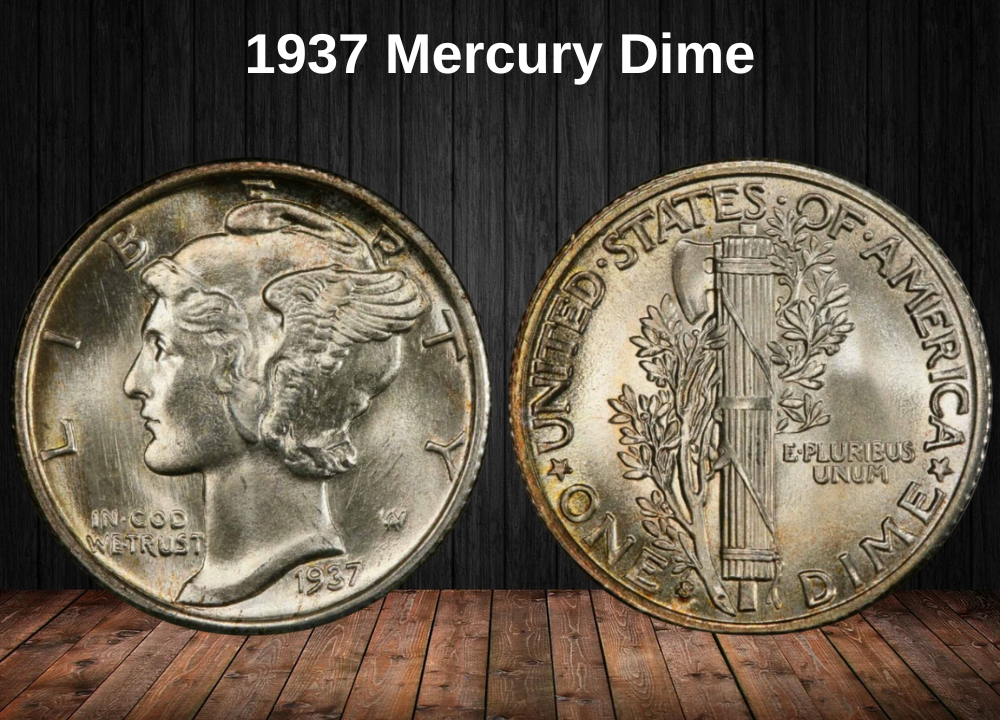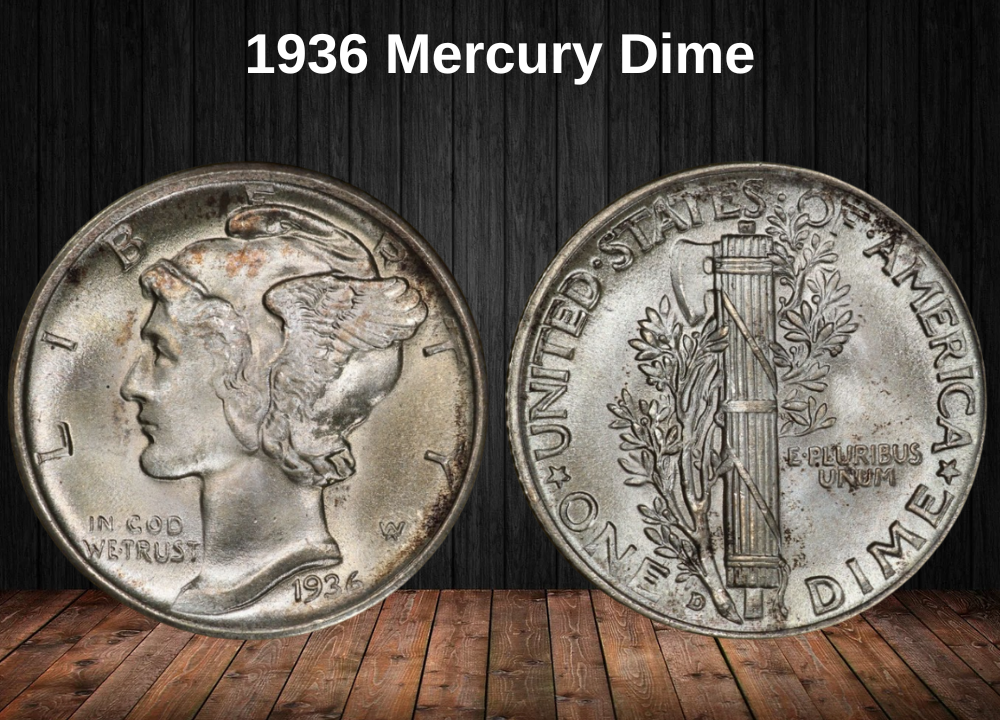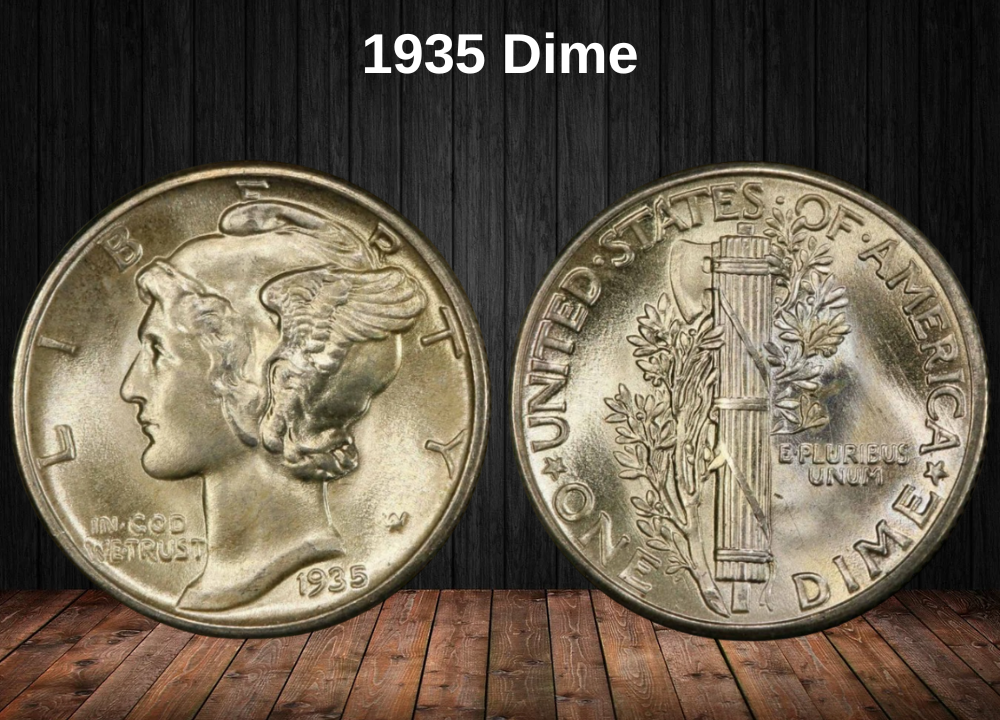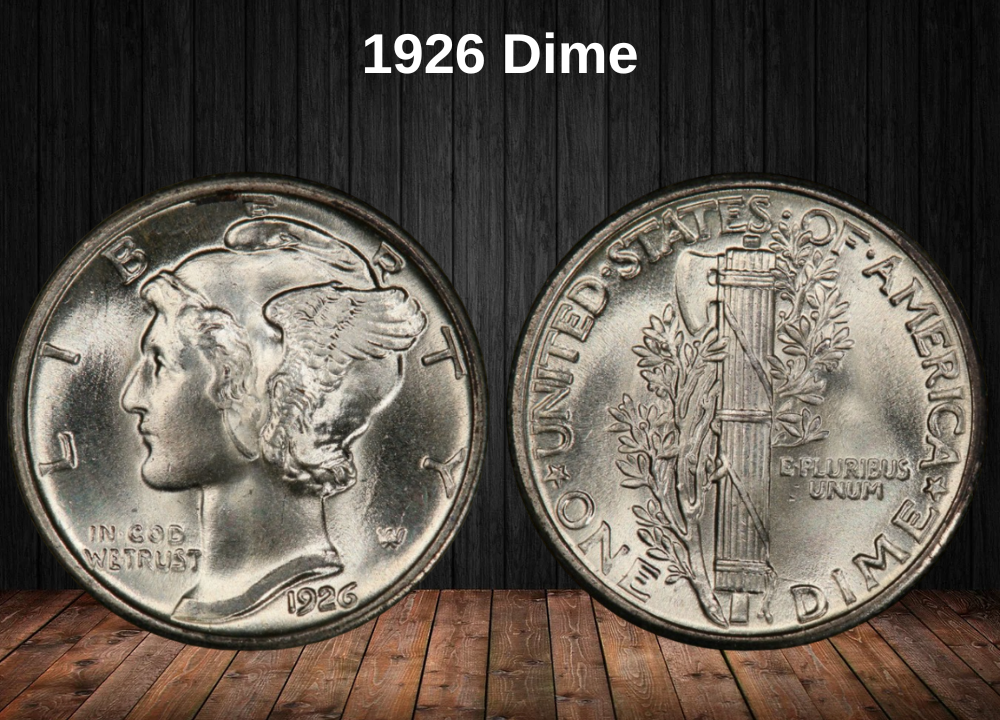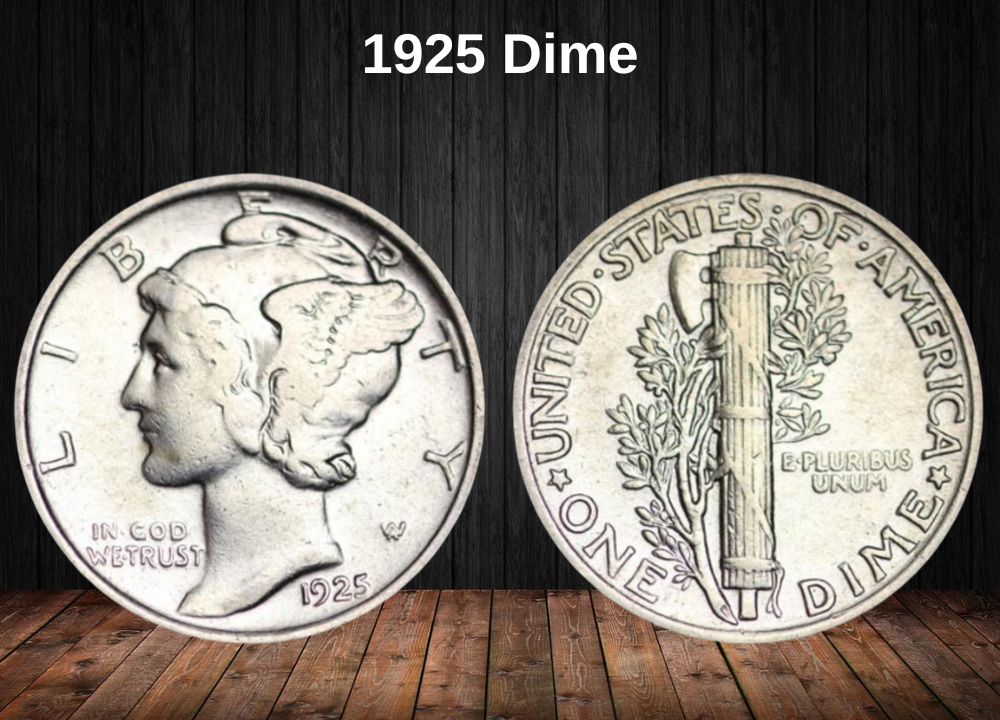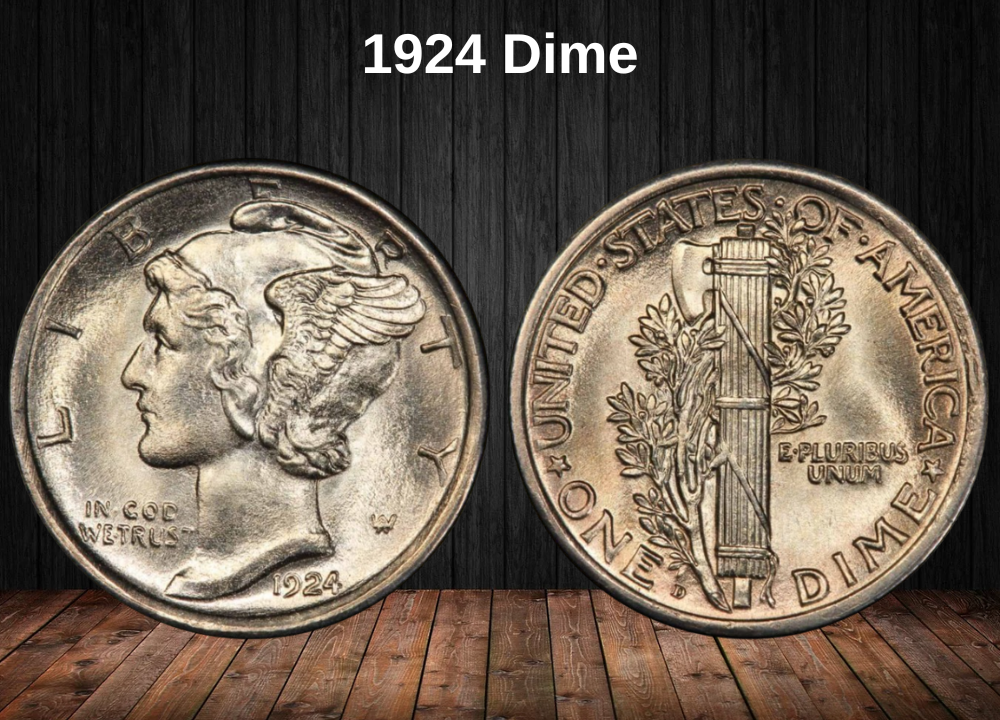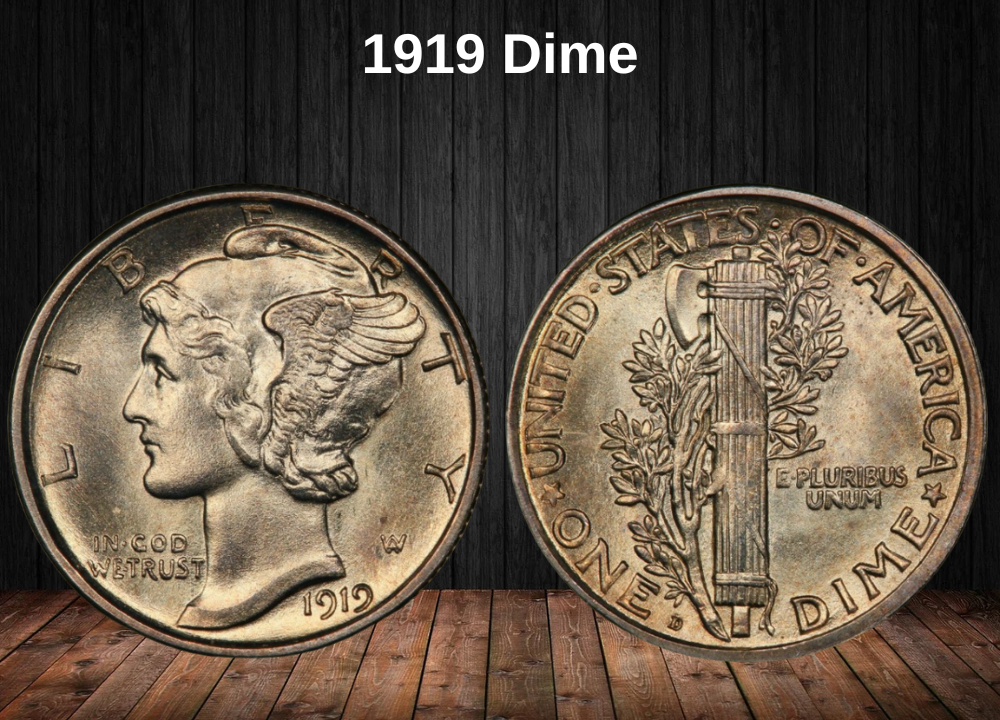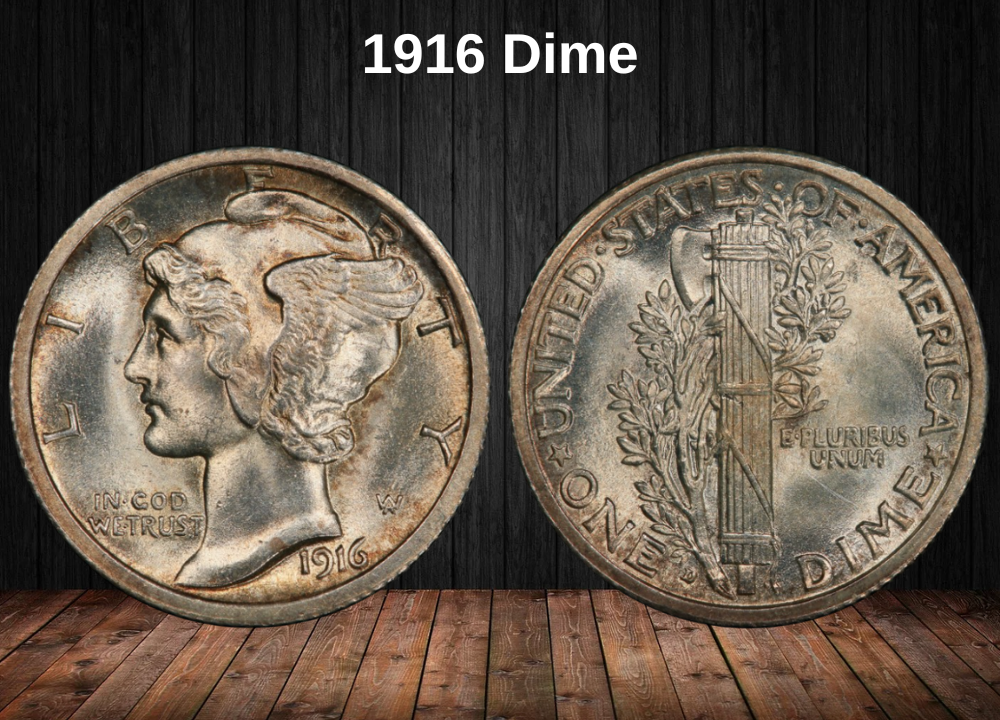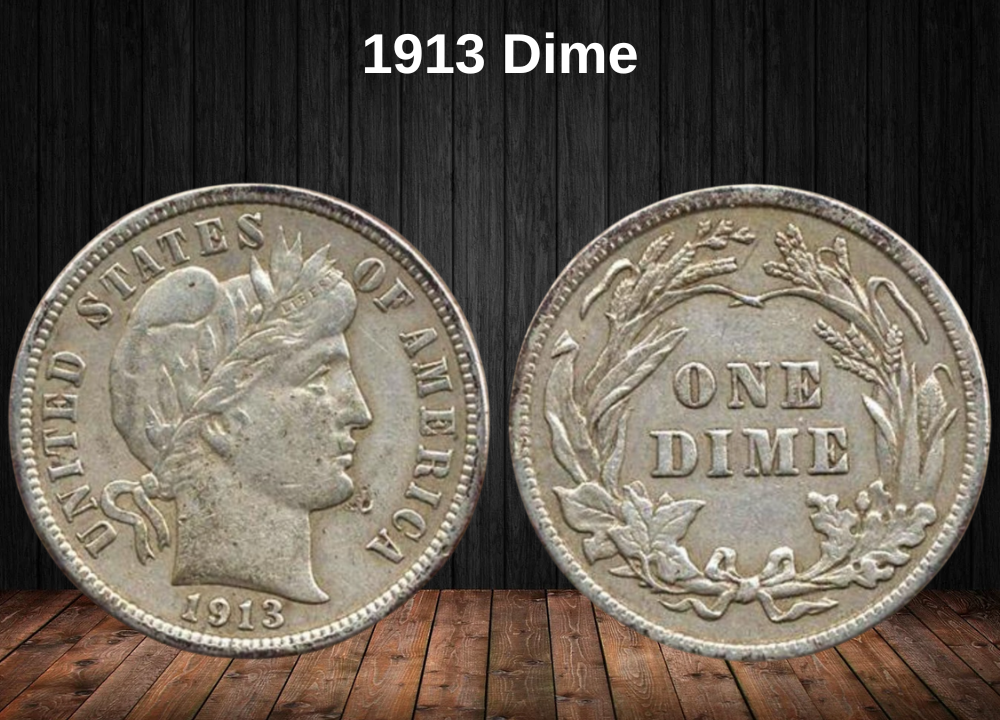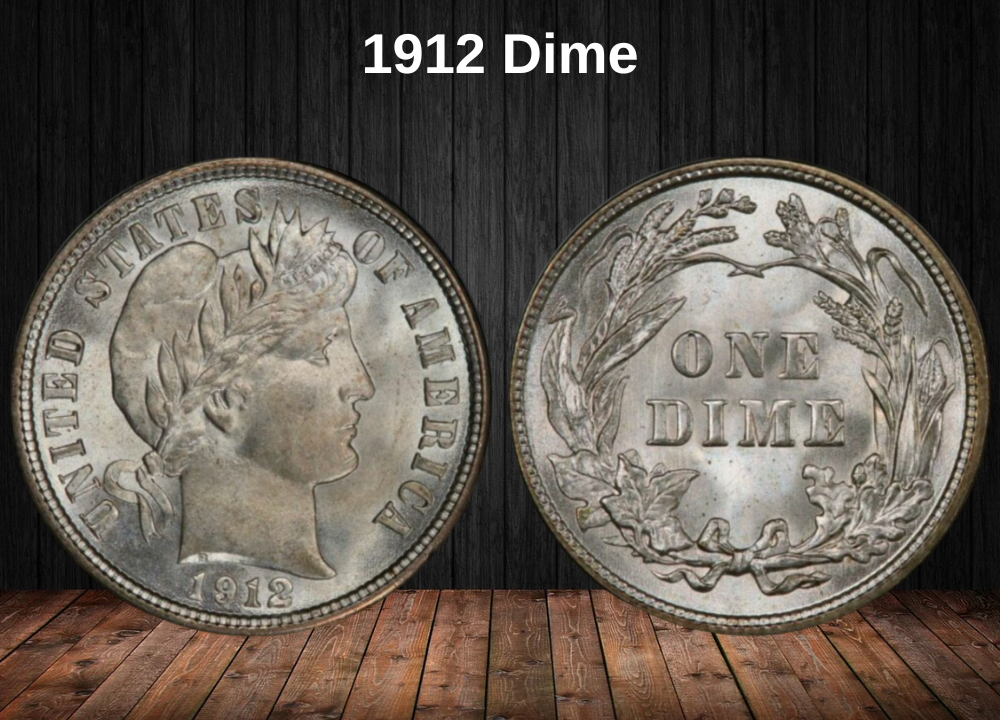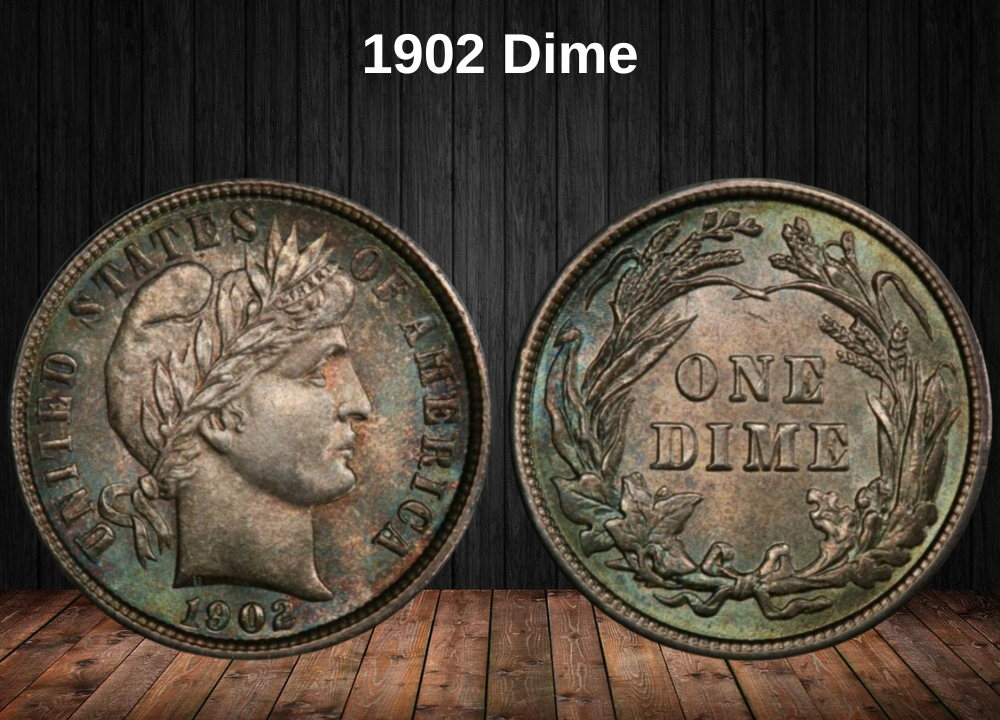The 1946 Roosevelt dime marked the beginning of a new era in U.S. coinage. After the end of the Mercury dime series in 1945, the U.S. Mint honored President Franklin Delano Roosevelt, who had passed away in 1945, by placing his portrait on the dime.
This change resonated with post-war America. The Roosevelt dime quickly became popular, as Roosevelt was admired for leading the nation through the Great Depression and World War II.
While millions were minted in 1946, most circulated heavily. Today, only coins in the highest grades or with minting errors command strong prices. Lower-quality examples are usually worth only their silver content plus a small premium.
1946 Roosevelt Dime Value Chart
| Condition | 1946 (No Mint Mark) | 1946 D | 1946 S |
|---|---|---|---|
| Good (G4) | $3.41 | $3.41 | $3.41 |
| Very Good (VG8) | $4.00 | $4.00 | $4.00 |
| Fine (F12) | $4.55 | $4.55 | $4.55 |
| Very Fine (VF20) | $4.81 | $4.81 | $4.81 |
| Extra Fine (XF40) | $5.10 | $5.10 | $5.10 |
| About Uncirculated (AU50) | $5.78 | $5.78 | $5.78 |
| MS 60 | $7.38 | $7.38 | $7.38 |
| MS 65 | $16 | $18 | $26 |
History of the 1946 Dime
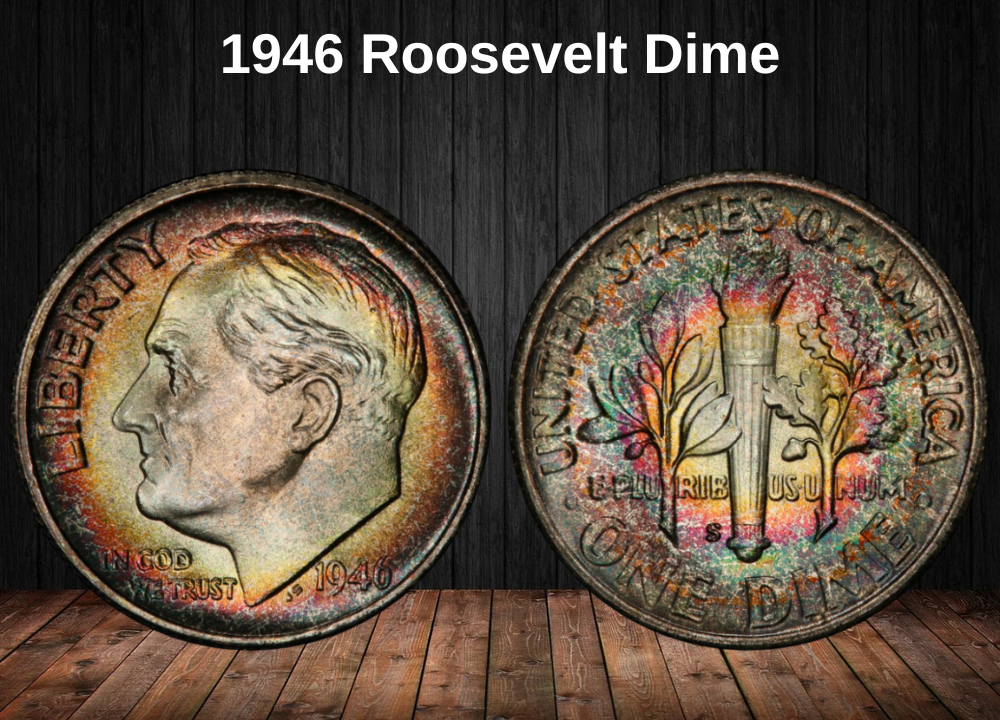
The dime has always been one of the smallest and thinnest American coins, designed to represent one-tenth of a dollar. The very first pieces, known as DISME, were struck in 1792, with the name derived from the French word dixième (meaning “tenth”).
By 1796, the U.S. Mint began issuing the Draped Bust dimes, followed over the years by four additional designs. After nearly 150 years of design evolution, the Roosevelt dime debuted in 1946 to honor President Franklin D. Roosevelt, who had passed away the year before. Unlike previous dime designs, the Roosevelt dime has never been replaced and remains in circulation with the same general appearance today.
Between 1946 and 1964, all Roosevelt dimes were struck in 90% silver, making them both collectible and a solid investment in precious metal. Starting in 1965, however, the Mint switched to a copper–nickel composition to reduce costs.
One unique feature that sets the dime apart from other U.S. coins is its reverse inscription: instead of showing the value as “TEN CENTS,” it simply reads “ONE DIME” — often confusing for non-Americans.
1946 Silver Dime Mintage
| Location | Year/Type | Mintage |
|---|---|---|
| Philadelphia | 1946 (no mint mark) | 255,250,000 |
| San Francisco | 1946 S dime | 27,900,000 |
| Denver | 1946 D dime | 61,043,500 |
| Total | / | 344,193,500 |
President Franklin D. Roosevelt, the 32nd U.S. President, was chosen to appear on the dime because of his leadership during the Great Depression and World War II, as well as his personal connection to the March of Dimes campaign to fight polio, a disease he himself battled.
However, the coin did not escape controversy. Its designer, John Ray Sinnock, placed his initials “JS” on the obverse. At the time, some Americans mistakenly believed “JS” referred to Joseph Stalin, the Soviet dictator. The U.S. Mint was eventually forced to issue an official statement clarifying that the initials were simply those of the coin’s designer.
Features of the 1946 Roosevelt Dime
The 1946 Roosevelt dime marked the first year of this long-running series, replacing the iconic Mercury dime. While the design initially drew some controversy due to the initials of its creator, it quickly became a familiar and enduring part of American coinage.
The Obverse of the 1946 Dime
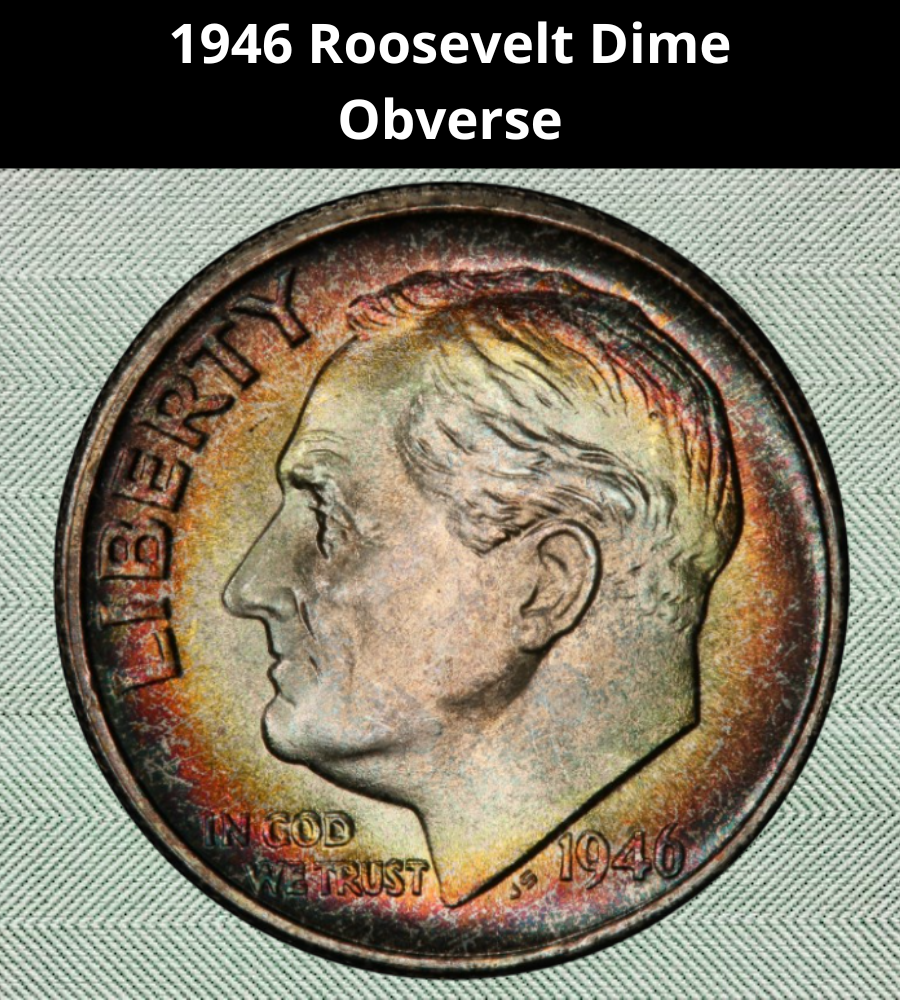
The obverse, designed by John R. Sinnock, features a left-facing portrait of President Franklin D. Roosevelt. The design is straightforward, with minimal elements beyond the required inscriptions:
- LIBERTY arcs along the left rim in front of Roosevelt’s face.
- The national motto IN GOD WE TRUST appears in small letters below the chin.
- The year of issue, 1946, is placed to the right of Roosevelt’s neck.
- Beneath the truncation of the bust are the disputed designer’s initials, JS.
This uncluttered design emphasizes Roosevelt’s dignified portrait, symbolizing leadership during the Depression and World War II.
The Reverse of the 1946 Dime
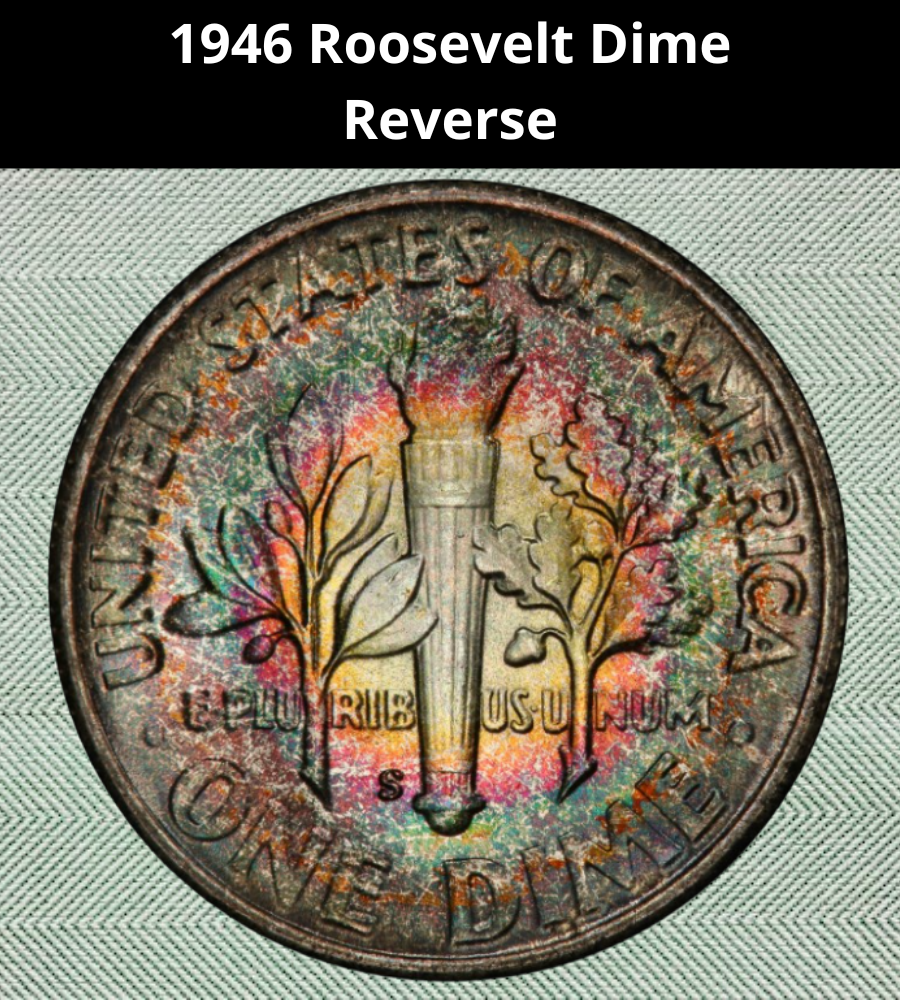
The reverse contrasts with the simplicity of the obverse, presenting a rich combination of national symbols:
- At the center is a torch, representing liberty.
- On the left is an olive branch, symbolizing peace.
- On the right is an oak branch, representing strength and victory.
Together, these three elements embody the spirit of post-war America. Surrounding the central design are the inscriptions:
- UNITED STATES OF AMERICA and ONE DIME along the outer rim.
- The motto E·PLURIBUS·UNUM creatively split across the branches and torch.
1946 Dime Specifications
| Detail | Specification |
|---|---|
| Face Value | $0.10 (Ten Cents) |
| Shape | Round |
| Edge | Reeded |
| Diameter | 17.90 mm (0.705 in) |
| Thickness | 1.35 mm (0.053 in) |
| Weight | 2.50 g (0.080 troy oz) |
| Composition | 90% Silver, 10% Copper |
| Silver Content | 2.25 g (0.072 troy oz) |
Other Features
Each 1946 Roosevelt dime has a reeded edge with 118 reeds. With its high silver content (90%), it remains valuable today not only to collectors but also to investors in precious metals.
1946 Roosevelt Dime Grading
| # | Grade |
|---|---|
| 1 | Basal State-1 |
| 2 | Fair |
| 3 | Very Fair |
| 4, 5, 6 | Good |
| 7, 8, 10 | Very Good |
| 12, 15 | Fine |
| 20, 30 | Very Fine |
| 40 | Extremely Fine |
| 50 | About Uncirculated |
| 60 | Mint State |
| 65 | Mint State |
| 70 | Mint State |
1946 Roosevelt Dime Value Guides
The U.S. Mint struck a total of 344,193,500 Roosevelt dimes in 1946, the very first year of the series. These coins came from three mints: Philadelphia (no mint mark), Denver (D), and San Francisco (S). While the Philadelphia facility produced the majority, nearly one-quarter of the year’s coinage carried either a D or S mint mark on the reverse.
1946 No Mint Mark Dime Value
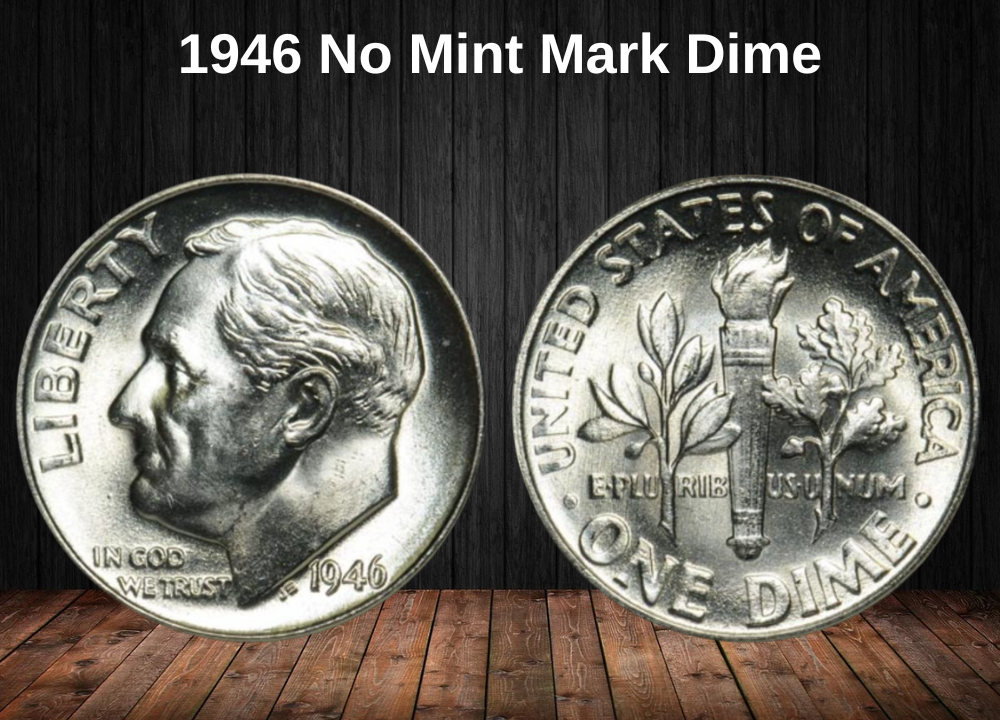
The Philadelphia Mint struck 255,250,000 dimes without a mint mark in 1946 — by far the largest share. Because of this high mintage, most survivors remain common today.
- Circulated examples: Around $2
- Uncirculated coins: Typically $2 to $40, depending on the grade
- High-grade pieces (MS 68): About $2,150
- Auction record: An MS 69 specimen sold for $12,650 (Nov 18, 2004)
👉 Collectors often pay premiums for Full Bands (FB) dimes, where the horizontal bands on the torch are fully struck and separated:
- MS 64 FB → $14
- MS 65 FB → $22
- MS 66 FB → $30
- MS 67 FB → $75
- MS 68 FB → Up to $2,150 (though one sold for $630 in 2024)
1946 D Dime Value

The Denver Mint produced 61,043,500 Roosevelt dimes in 1946. These are generally affordable in most grades.
- Circulated pieces: $2 to $6
- Uncirculated examples:
- MS 65 → $20
- MS 66 → $26
- MS 67 → $55
- Top grade (MS 68): About $1,000 (recorded at a 2007 New Year’s auction)
Full Bands varieties from Denver are significantly more collectible:
- MS 66 FB → $36
- MS 67 FB → $110+
- MS 68 FB → About $4,600
- Auction record: An MS 68 FB brought $4,888 (July 12, 2007)
1946 S Dime Value
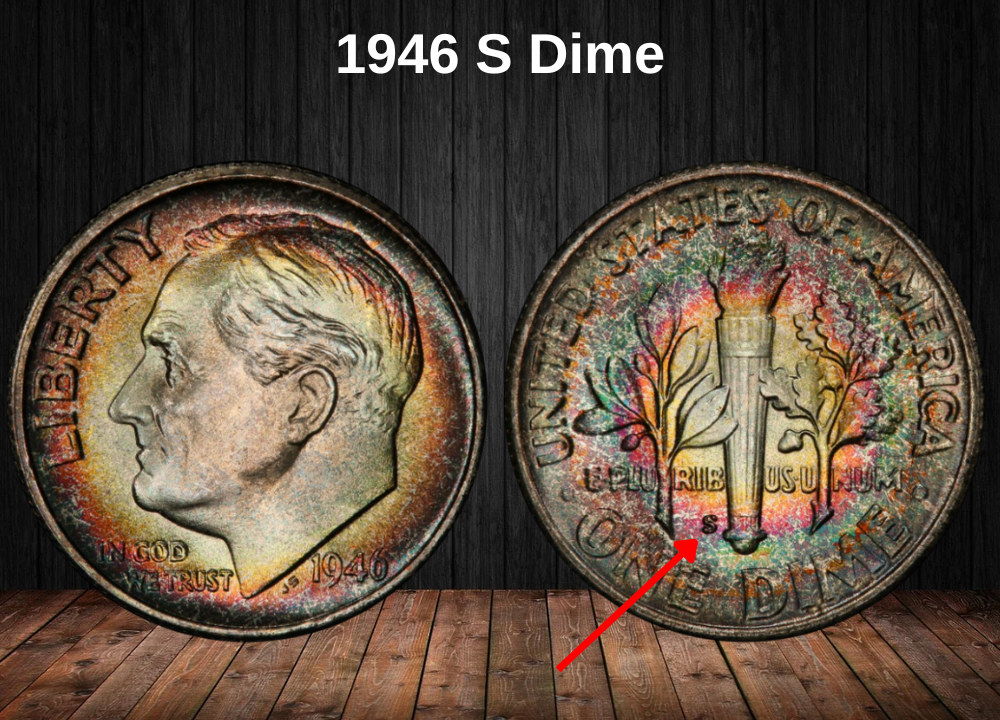
San Francisco had the lowest output in 1946, striking 27,900,000 dimes. Despite this, their values are similar to Philadelphia and Denver coins.
- Circulated examples: Around $2
- Uncirculated pieces: $2 to $65
- High-grade (MS 68): About $1,400
- Auction record: An MS 68 dime sold for $1,840 (2007)
Full Bands (FB) examples again command higher premiums:
- MS 65 FB → $22
- MS 67 FB → $135
- MS 68 FB → Around $1,450
- Auction record: One sold for $1,840 in 2007
Rare 1946 Roosevelt Dime Error List
Just like other coin series, Roosevelt dimes from 1946 can be found with striking errors and die varieties. These imperfections, rather than hurting value, often make the coins more collectible because of their rarity and uniqueness. Below are the most notable and valuable error types for this year.
1. Re-Punched Mint Mark (D/D or S/S)
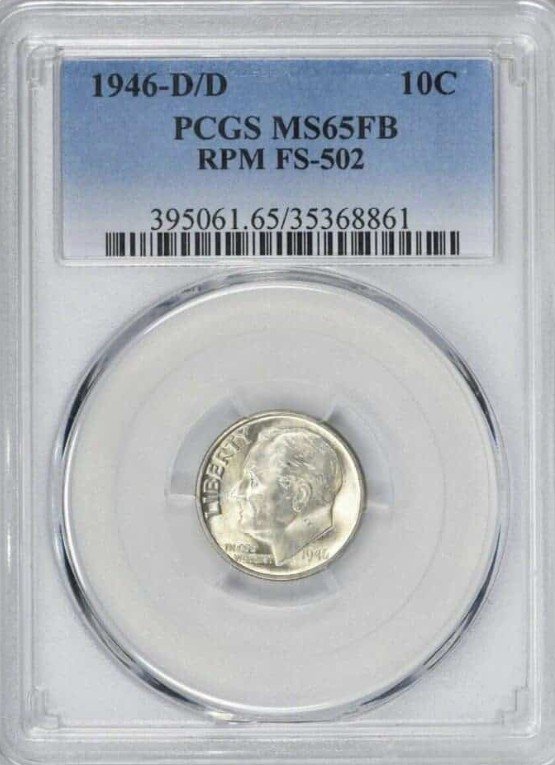
Some dimes struck in Denver (D) and San Francisco (S) show re-punched mint marks, where the letter was impressed more than once, resulting in a doubled or even tripled effect.
- Average value: $50 – $150
- Premium pieces: One 1946 D/D Full Bands dime sold for $380, while another went for $995.
- San Francisco examples (S/S) are scarcer and can fetch several thousand dollars at auction.
2. Doubled-Die Obverse/Reverse (DDO/DDR)
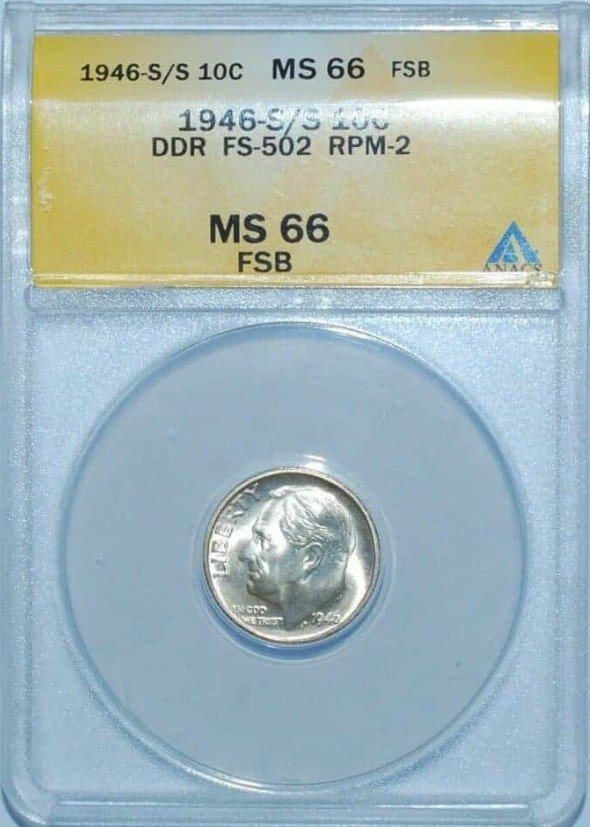
Philadelphia produced some 1946 dimes with doubled lettering or numbers, most noticeable in the date or inscriptions.
- Average examples: Around $135
- Auction highlight: A 1946 MS 64 DDO/DDR dime sold for $750 in 2021
- Combination errors (DDR + re-punched mint mark) can bring $720, while Full Bands specimens with this error reached as high as $2,760 (2020 auction)
3. Broad Struck Dimes
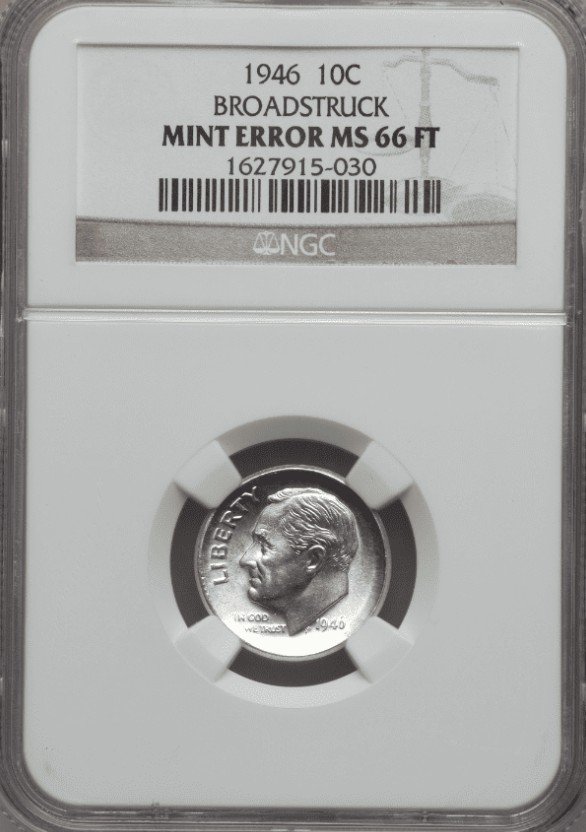
Normally, dimes are struck with a three-piece collar to maintain their circular shape. Occasionally, part of the collar fails, producing a broad strike with a flatter, wider rim.
- Collectible value: Around $100
4. Elliptical Planchet Error
Some dimes were struck on elliptical planchets instead of perfectly round blanks, giving the coin an odd, oval shape.
- Notable sale: One such dime realized $260 at auction
5. Die Crack Errors
Overused dies sometimes developed cracks that transferred to the coin’s surface. These die cracks create raised, irregular lines on the design.
- Value depends on size and visibility, but premium pieces can bring well above face value
Where to Sell Your Dime Coin?
Now that you know the value of your dime, the next step is deciding where to sell it. There are several trusted options—both online and in person—that can help you get the best price depending on your coin’s rarity and condition.
To see the full list of recommended places, along with their advantages and disadvantages, check our complete guide on where to sell your dime coins.
FAQ about the 1946 Roosevelt Dime
1. Why was the Roosevelt dime introduced in 1946?
The coin was created to honor President Franklin D. Roosevelt, who had passed away in April 1945. Roosevelt was deeply associated with the March of Dimes campaign against polio, making his portrait fitting for the dime denomination.
2. Who designed the 1946 Roosevelt dime?
The dime was designed by John R. Sinnock, Chief Engraver of the U.S. Mint. His initials “JS” appear below Roosevelt’s neck, sparking controversy at the time, as some Americans mistakenly thought they referred to Joseph Stalin.
3. What is the metal composition of the 1946 Roosevelt dime?
These dimes were struck in 90% silver and 10% copper. Each coin contains 0.07234 troy ounces of silver, making even worn examples worth at least their bullion value.
4. Where were 1946 dimes minted?
Three U.S. Mints struck the Roosevelt dime in 1946:
- Philadelphia: 255,250,000 (no mint mark)
- Denver: 61,043,500 (D mint mark)
- San Francisco: 27,900,000 (S mint mark)
5. What is the average value of a 1946 Roosevelt dime?
Most circulated examples are worth $2 to $4, primarily for their silver content. Collectors pay more for higher grades:
- MS 65 examples range from $16 to $26 depending on mint mark.
- MS 68 and Full Bands coins can sell for thousands of dollars at auction.
6. What are “Full Bands” dimes and why are they valuable?
Full Bands (FB) refers to complete separation in the horizontal bands of the torch on the reverse. These details indicate a strong strike and are much scarcer, which makes FB dimes more collectible and valuable.
7. Are there any valuable error coins from 1946?
Yes. Collectors prize several errors, including:
- Re-punched mint marks (D/D or S/S)
- Doubled-die obverse or reverse (DDO/DDR)
- Broad strikes and elliptical planchets
- Die crack varieties
Some rare Full Bands errors have sold for over $2,700 at auction.
8. Is the 1946 dime still in circulation?
While possible, it is rare to find silver Roosevelt dimes in everyday circulation today. Most have been removed by collectors or melted for bullion.
9. How can I tell if my 1946 dime is valuable?
Check for:
- Mint mark (on the reverse, near the torch)
- Condition/grade (MS 65 or higher brings premiums)
- Full Bands designation
- Error varieties (DDO, RPM, etc.)
10. What’s the most expensive 1946 Roosevelt dime ever sold?
A 1946 No Mint Mark dime graded MS 69 sold for $12,650 in 2004. Meanwhile, certain error/FB coins have also reached auction prices of over $4,800.


